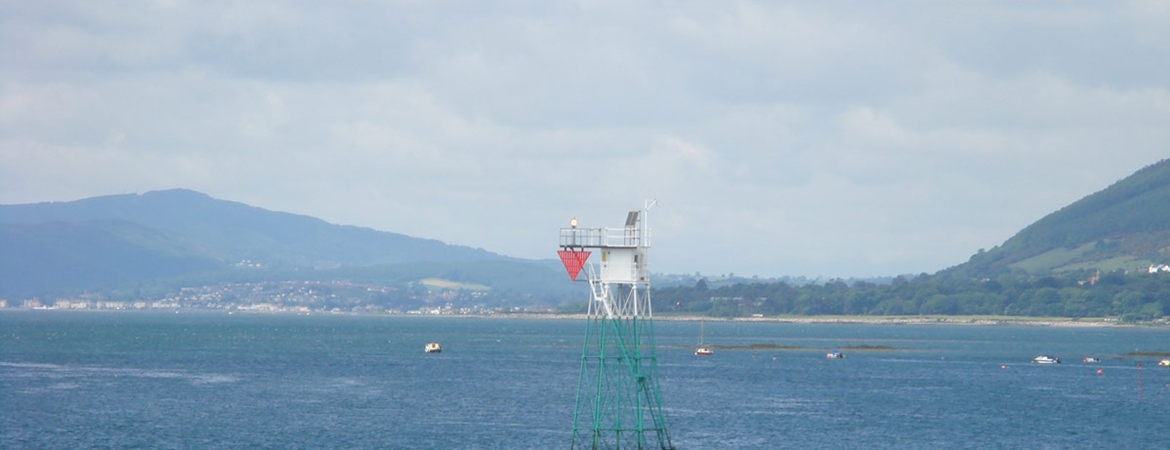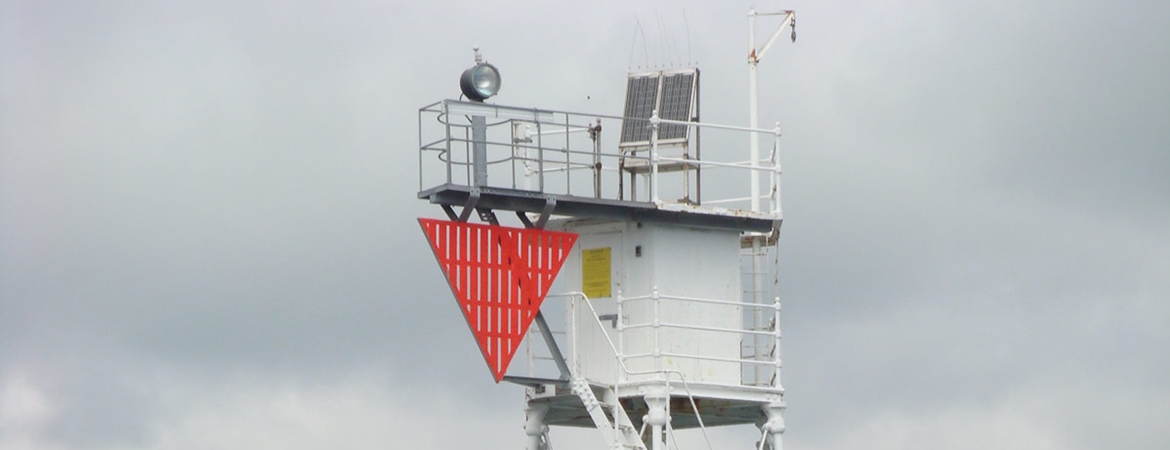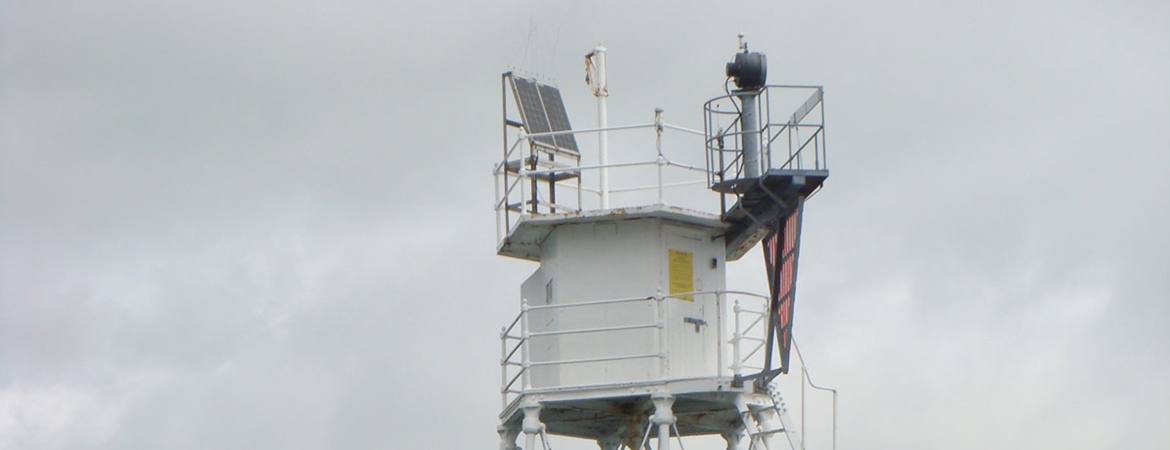Early in 1868 the Carlingford Lough Commissioners informed the Irish Lights Commissioners that they were deepening the channel through the Bar into Carlingford Lough and desired to erect two leading lights for the channel. The Inspecting Committee visited Carlingford Lough and in their report recommended that the two lights be erected. By July 1868 it had been agreed that the lights should come under the Mercantile Marine Fund and the Carlingford Commissioners requested Irish Lights to make arrangements for the construction of the two lights.
The lights are screw-pile lattice steel structures with a small housing for the light on top. The rear structure, Green Island, is 13.7m (45 feet) high above high water and the front structure, Vidal Bank, is 8.8m (28 feet) high. They are 457m (500 yards) apart. Fixed white lights were established on 28th February 1873 and the structures were painted red with a white housing for the light, which at that time was an oil lamp.
In 1922 the lights were converted to unwatched acetylene with a water to carbide generator. The character of the lights was altered from fixed to occulting giving a two second flash every three seconds. In 1967 propane cylinders replaced the acetylene generators and the light source changed to a mantle from a fantail flame. In August 1999 the leading lights were solarised and the flash characteristics were synchronised. From this date the lights were exhibited in hours of darkness only.
The Attendant who looks after the Carlingford Leading Lights is also in charge of Haulbowline Lighthouse.
To comply with the 1979-81 System 'A' Buoyage the colour of the structures was changed from red to green, starboard hand.









